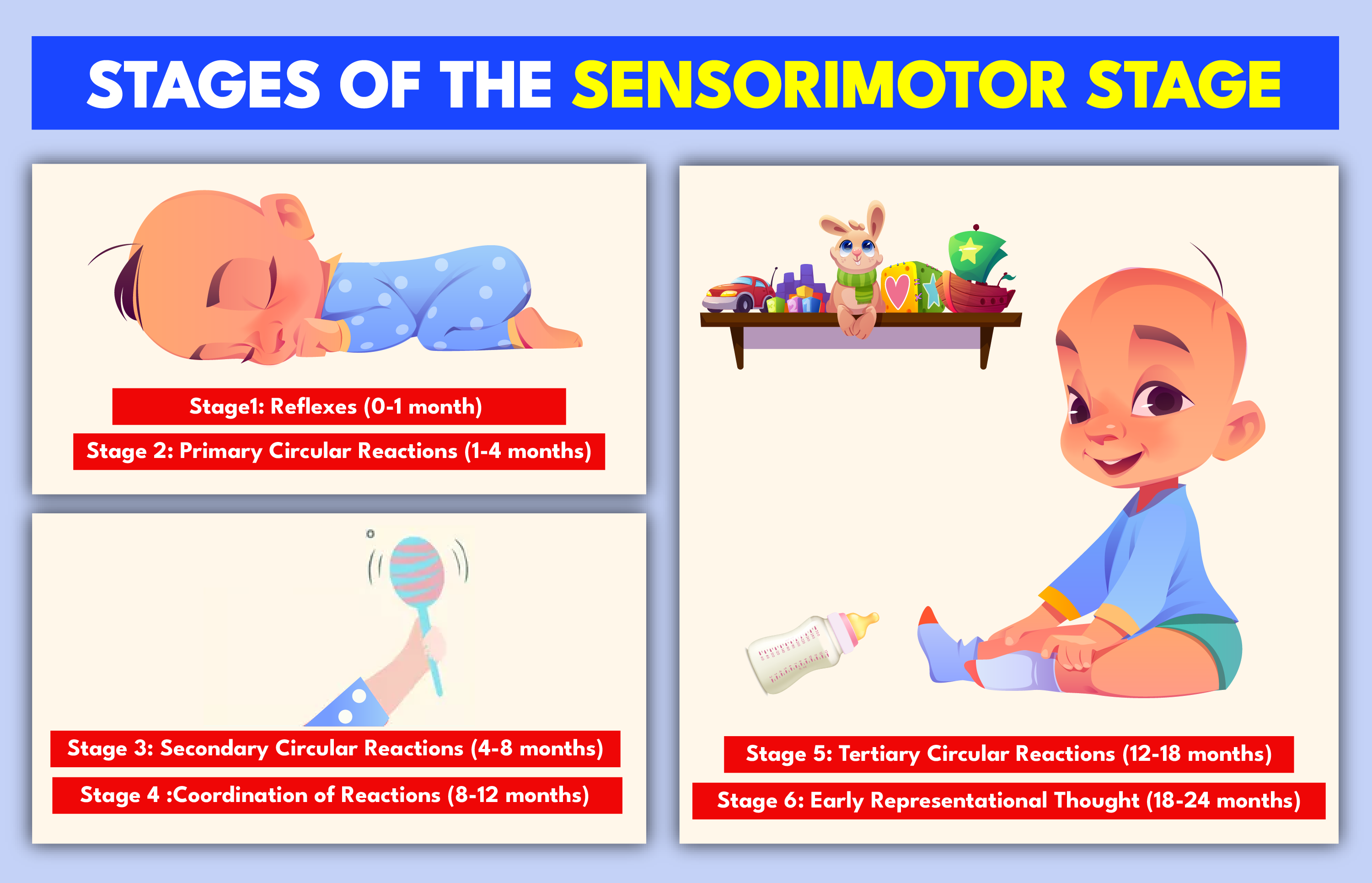Table of Contents
The sensorimotor stage is the first phase of cognitive development in children, as described by psychologist Jean Piaget. This stage occurs from birth to about two years old and is crucial for a child’s early learning and development.
What is Sensorimotor Stage
The sensorimotor stage spans from birth to approximately two years of age. During this period, infants learn about the world primarily through their senses (such as sight, sound, and touch) and their actions (such as grasping, sucking, and manipulating objects). It is a time of rapid growth and development where the foundation for future cognitive abilities is established.
Stages of Sensorimotor Stage
The sensorimotor stage is a foundational period in a child’s cognitive development. Through sensory and motor interactions with their environment, infants develop essential skills and concepts that pave the way for future learning and cognitive growth. Here we have explained the Stages of Sensorimotor Stage in below article.
- Reflexes and Initial Responses:
- Newborns start with innate reflexes, such as sucking and grasping.
- These reflexes are the building blocks for more complex behaviors.
- Primary Circular Reactions (1-4 months):
- Infants begin to repeat pleasurable actions centered on their own bodies.
- For example, they might suck their thumb repeatedly because it feels comforting.
- Secondary Circular Reactions (4-8 months):
- Actions become more focused on the external environment.
- Babies repeat actions that bring about a response from their environment, such as shaking a rattle to hear the sound.
- Coordination of Reactions (8-12 months):
- Infants start to show intentionality and goal-directed behavior.
- They might combine schemas (actions) to achieve a desired effect, such as pushing one toy out of the way to reach another.
- Tertiary Circular Reactions (12-18 months):
- Experimentation begins, with infants trying different actions to see varying results.
- This stage is marked by curiosity and experimentation, such as dropping objects from different heights to observe how they fall.
- Early Representational Thought (18-24 months):
- Symbolic thinking starts to develop.
- Infants begin to form mental representations of objects and events, allowing them to solve problems mentally rather than through trial and error.
Read Here : Piaget’s 4 Stages of Cognitive Development
Practical Example of the Sensorimotor Stage
To better understand the sensorimotor stage, let’s look at a practical example of a child’s development during this period.
Meet Baby Emma
Baby Emma is 9 months old and is in the midst of the sensorimotor stage. Here are some typical activities and behaviors that illustrate her cognitive development:
- Providing Varied Sensory Experiences:
- They gave her toys with different textures, sounds, and colors. For example, they provided soft, crinkly fabric books and plastic rings that made noise when shaken.
- Encouraging Safe Exploration:
- Emma was allowed to crawl and explore her safe, baby-proofed environment. She had access to different objects she could touch, move, and examine.
- Engaging Interactively:
- Her parents played simple games like peek-a-boo and hide-and-seek with toys, which helped Emma develop her understanding of object permanence.
- Promoting Problem-Solving:
- They gave her toys that required some effort to figure out, such as shape sorters and stackable rings. These toys encouraged her to experiment and solve problems, boosting her cognitive skills.
Download Sensorimotor Stage Study Notes PDF
The direct Link to download the Sensorimotor Stage has been provided below. Candidate must click on below link to read “What is Sensorimotor Stage? Check Stages, Examples” in details for exam preparation.




 समुद्र का पर्य�...
समुद्र का पर्य�...
 उपमा अलंकार: पर�...
उपमा अलंकार: पर�...
 समास परिभाषा, भ�...
समास परिभाषा, भ�...














